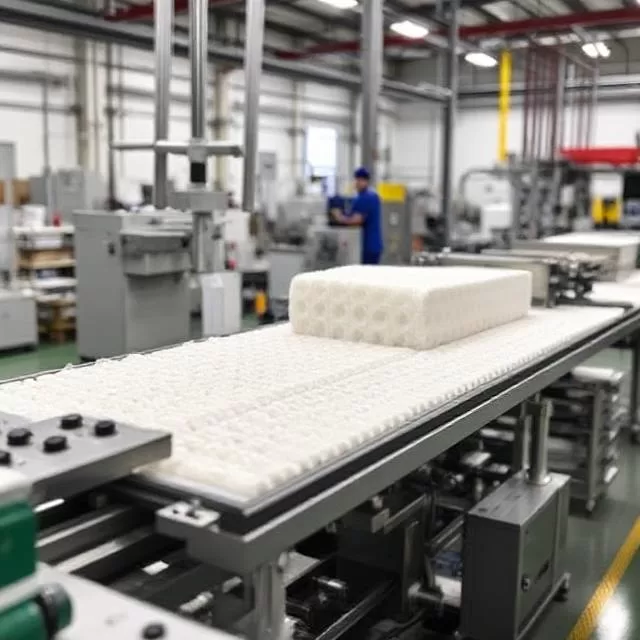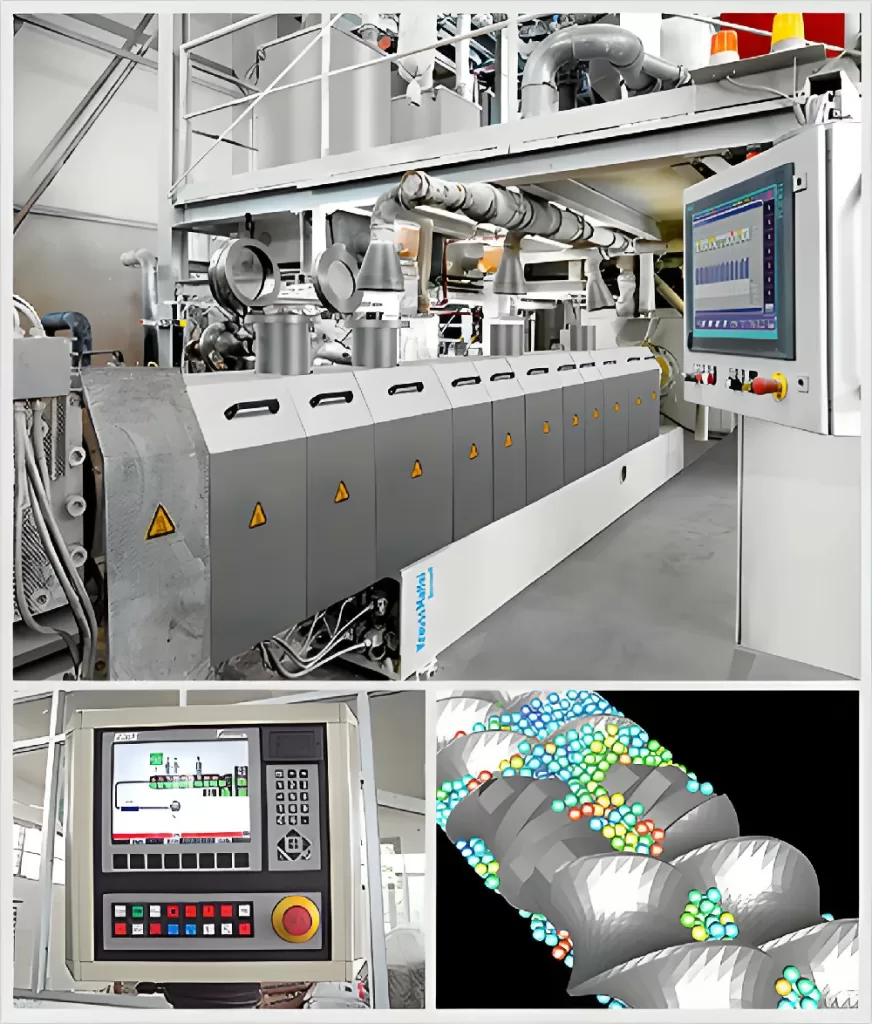The masterbatch manufacturing process plays a crucial role in modern plastics production, enabling the creation of colorful, functional, and high-performance polymer products used in everything from packaging films and fibers to automotive parts and construction materials. Masterbatch — a concentrated mixture of pigments, additives, or both — allows plastic processors to efficiently achieve consistent color and performance in their products.

This article offers a comprehensive breakdown of how masterbatch is made, the materials involved, production techniques, and quality control measures. We’ll also introduce Charming Masterbatch — a leading manufacturer known for its innovation and quality in the global masterbatch industry.
Table of Contents
- 1. Introduction to Masterbatch
- 2. Raw Materials Used in Masterbatch Production
- 3. Mixing and Pre-Blending Process
- 4. Extrusion: The Heart of Masterbatch Manufacturing
- 5. Cooling and Pelletizing
- 6. Quality Control and Testing
- 7. Types of Masterbatch and Applications
- 8. Advantages of Using Masterbatch
- 9. About Charming Masterbatch — Excellence in Color and Functionality
- Summary Table
- FAQs
- References
1. Introduction to Masterbatch
Masterbatch is a solid or liquid additive used to color or impart specific properties to plastic products. It consists of a high concentration of pigments or additives encapsulated during a heat process into a carrier resin, which is then cooled and cut into granular form.
When mixed with natural polymer during the molding or extrusion process, masterbatch ensures consistent dispersion and uniform color or functionality — such as UV resistance, flame retardancy, or antimicrobial properties.
Key Benefits of Using Masterbatch:
- Uniform dispersion of pigments and additives
- Improved processing efficiency
- Reduced dust and contamination
- Cost-effective coloring and functionalization
- Enhanced product appearance and performance
2. Raw Materials Used in Masterbatch Production
The quality of a masterbatch largely depends on the raw materials used. The selection of high-purity pigments and compatible polymers ensures consistent color intensity and performance.
Main Components:
- Carrier Resin: The base material that encapsulates pigments or additives. Common carriers include PE, PP, PS, PET, and EVA.
- Pigments and Dyes: Provide color; available in organic or inorganic forms depending on heat resistance and opacity requirements.
- Additives: Enhance performance — such as UV stabilizers, antioxidants, antistatic agents, flame retardants, or antimicrobial agents.
- Dispersing Agents: Improve uniformity and prevent pigment agglomeration.
3. Mixing and Pre-Blending Process
The manufacturing process begins with the accurate weighing and pre-blending of raw materials. Proper mixing ensures even distribution of pigments and additives before extrusion.
Pre-Blending Steps:
- Weighing: Each ingredient is precisely measured according to the formulation.
- Dry Blending: Pigments, additives, and carrier resins are mixed in high-speed mixers to create a homogeneous blend.
- Feeding: The blended material is fed into the hopper of a twin-screw extruder.
4. Extrusion: The Heart of Masterbatch Manufacturing
The extrusion process is the core stage of masterbatch production. It involves melting, dispersing, and compounding pigments with the carrier resin using a twin-screw extruder.
Key Parameters in Extrusion:
- Temperature Control: Optimal temperature ensures thorough dispersion without degrading pigments.
- Screw Speed: Determines shear force and mixing efficiency.
- Residence Time: Controls the degree of pigment wetting and dispersion.
- Pressure Regulation: Maintains stable flow and uniform output.
Charming Masterbatch employs advanced twin-screw machines imported from Germany to achieve exceptional pigment dispersion and stable color quality. Their expertise in processing and dispersion technology ensures uniform and high-performance masterbatch suitable for diverse plastic applications.
5. Cooling and Pelletizing
Once the mixture exits the extruder, it is rapidly cooled and converted into granules or pellets. This makes it easy to handle, transport, and dose during plastic processing.
Steps Involved:
- Cooling: The hot extrudate passes through a water bath or air cooling system.
- Pelletizing: The cooled strand is cut into small, uniform pellets.
- Drying: Removes residual moisture to prevent defects during molding.
6. Quality Control and Testing
Every batch undergoes rigorous quality control tests to ensure consistency, color strength, and physical performance. Masterbatch quality control guarantees that the final product meets customer specifications and international standards.
Common Tests Include:
- Color Matching: Visual and spectrophotometric comparison with reference samples.
- Melt Flow Index (MFI): Evaluates compatibility with the customer’s processing resin.
- Dispersion Test: Ensures even pigment distribution with no agglomeration.
- Heat Stability Test: Checks for color retention under high temperatures.
- Weathering and UV Resistance: Determines long-term durability.
7. Types of Masterbatch and Applications
Depending on function and application, masterbatch can be classified into two main types: Color Masterbatch and Additive Masterbatch.
1. Color Masterbatch
Provides vibrant, uniform color to polymers and can be tailored for various end-use products such as films, fibers, and injection-molded parts.
2. Functional (Additive) Masterbatch
Enhances polymer performance with additional properties such as:
- Antimicrobial: Prevents bacterial growth on plastic surfaces.
- Antistatic: Reduces static electricity accumulation.
- Flame Retardant: Improves fire safety performance.
- UV Stabilizer: Protects against sunlight degradation.
Applications Include:
- Plastic films and sheets
- Fibers, filaments, and nonwovens
- Injection-molded parts
- Packaging materials
- Automotive components
8. Advantages of Using Masterbatch
Using masterbatch provides numerous production and performance benefits for plastic processors compared to direct pigment or additive dosing.
Key Advantages:
- Ease of Handling: Clean and dust-free compared to raw pigments.
- Enhanced Color Consistency: Uniform dispersion yields consistent shades.
- Reduced Waste: More precise dosing and minimal contamination.
- Improved Processing Efficiency: Optimized for various molding methods.
- Customizability: Tailored for specific end-use properties and performance requirements.
9. About Charming Masterbatch — Excellence in Color and Functionality

Charming Masterbatch is a professional masterbatch manufacturer with advanced twin-screw extrusion technology and decades of expertise in pigment dispersion. The company provides high-quality color masterbatch and functional masterbatch solutions to a global clientele.
With its production base equipped with German twin-screw machines, Charming ensures superior consistency, brightness, and dispersion stability. The company is widely recognized in China and exports to Europe, South America, Southeast Asia, the Middle East, and North Africa — serving over 18 countries worldwide.
Product Categories:
- Color Masterbatch
- Fiber / Filament / BCF / Nonwoven Masterbatch
- Film / Plastic Masterbatch
- Functional Masterbatch
- Antimicrobial Masterbatch
- Antistatic Masterbatch
- Flame Retardant Masterbatch
- UV Stabilizer Masterbatch
Beyond products, Charming offers comprehensive technical support and customized development cooperation — enabling clients to solve production challenges and co-develop innovative projects. The company’s philosophy centers around partnership, innovation, and mutual growth.
Summary Table
| Stage | Description |
|---|---|
| Raw Material Selection | High-quality resins and pigments selected for compatibility. |
| Pre-Blending | Dry mixing ensures uniform distribution before extrusion. |
| Extrusion | Melting, dispersing, and compounding in twin-screw machines. |
| Cooling & Pelletizing | Extrudate cooled and cut into uniform pellets. |
| Quality Testing | Color strength, dispersion, stability, and performance tested. |
| Packaging | Packed in moisture-proof bags for transport and storage. |
FAQs
1. What is masterbatch used for?
Masterbatch is used to add color and specific functional properties to plastics, ensuring consistent quality and performance across production batches.
2. Why use twin-screw extruders in masterbatch production?
Twin-screw extruders provide superior pigment dispersion and mixing control, essential for achieving uniform color and performance stability.
3. What makes Charming Masterbatch different?
Charming Masterbatch combines advanced German machinery with decades of experience and customized R&D support, offering tailored color and additive solutions to global customers.
4. Can Charming develop custom masterbatch formulations?
Yes, Charming offers individual development cooperation to create new color or functional masterbatch solutions based on client specifications.
